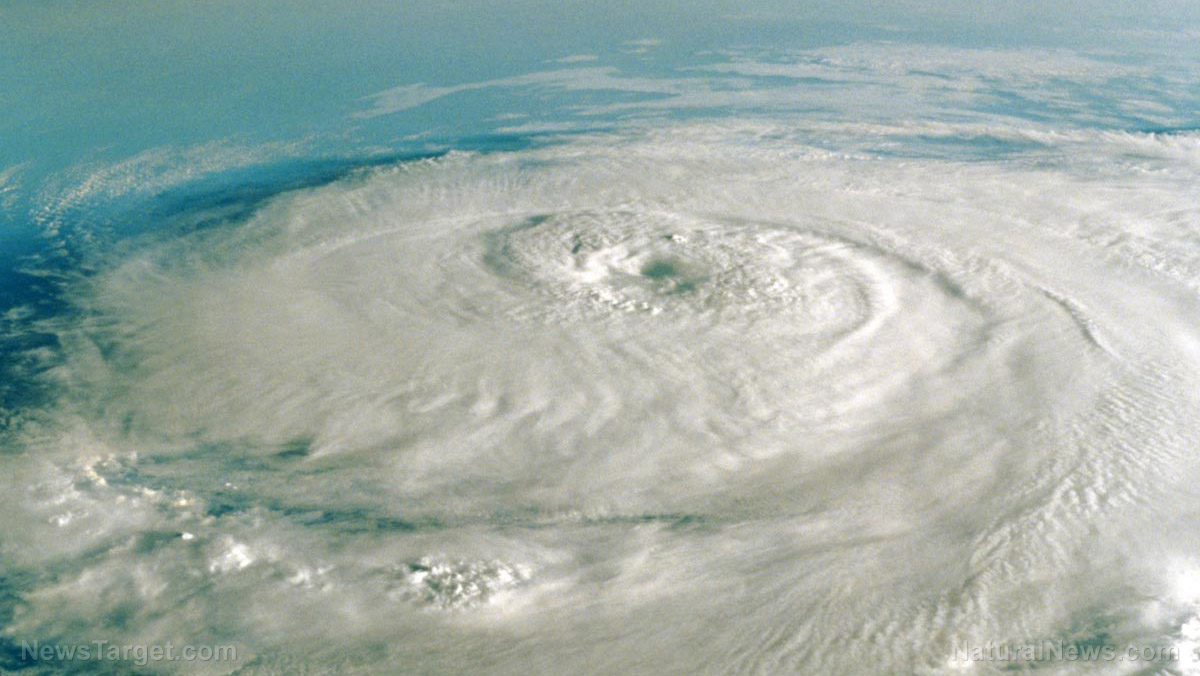After mocking weather control theories, mainstream media now admits weather systems can be directly controlled using lasers
10/10/2017 / By Jayson Veley

Later this month, Warner Bros. Entertainment will release the highly anticipated film Geostorm, which is supposedly about what happens when the world’s leaders develop technology that is capable of controlling the weather. While the movie is purely fictional, the fact of the matter is that weather-controlling technology may be more than something that exists solely in the world of CGI and special effects.
Despite the fact that those who believe in the ability to control the weather through the use of advanced technology are routinely mocked and laughed at, scientists may have found a way to induce rain and lightning storms via high energy lasers, which could potentially be used to eradicate droughts across the world.
Experts at the University of Central Florida and the University of Arizona believe that they can activate static electricity in the clouds and induce rainstorms by firing a series of laser beams into the sky.
Matthew Mills, a graduate student in the Center for Research and Education in Optics and Lasers (CREOL), explained that while laser beams can travel vast distances, “when a laser beam becomes intense enough, it behaves differently than usual – it collapses inward on itself.” Mills added, “The collapse becomes so intense that electrons in the air’s oxygen and nitrogen are ripped off creating plasma – basically a soup of electrons.”
Eventually, the laser collapses in on itself in a process known as “filamentation.” Mr. Mills explained, “Because a filament creates excited electrons in its wake as it moves, it artificially seeds the conditions necessary for rain and lightning to occur.”
“What would be nice is to have a sneaky way which allows us to produce an arbitrary long filament extension cable,” Mills said, adding, “It turns out that if you wrap a large, low intensity, doughnut-like ‘dress’ beam around the filament and slowly move it inward, you can provide this arbitrary extension” (Related: Here is a list of 175 U.S. patents that prove that weather control technologies are real.)
Indeed, having the ability to control the weather and determine when it will rain would likely improve our world in ways we can’t even comprehend. There are hundreds of regions on planet earth that hardly experience any rainfall at all, forcing the people who live there to go long periods of time without easy access to drinking water. If these experts at the University of Central Florida and the University of Arizona are correct in that we can induce rain and lightning through the use of powerful lasers, then perhaps no one on earth would have to suffer from a lack of water ever again.
However, as beneficial as weather-controlling technology could be, there is a rather serious downside. As a matter of fact, the dangers of developing technology that is capable of controlling the weather is something that many people are legitimately concerned about. What would happen if one country had the ability to artificially produce a massive hurricane and send it in the direction of their enemies? What if so much rain could be induced over a particular region that it actually produced a flood, washing away millions of dollars in agriculture and killing countless innocent people?
Dane Wigington of GeoEngineeringWatch.org wrote about this concept of weather warfare in a brief article published back in 2015. Wigington mentioned a concept called chemical ice nucleation, which allows weather-makers to temporarily cool down specific regions to the point where it could cause severe destruction or even loss of life.
The concept of developing advanced technology that can control the weather is something that must be thought out carefully and sufficiently before it is tested or implemented in any way. The potential benefits are magnificent, but on the flipside, the potential destruction that could come as a result must be considered.
Sources include:
Submit a correction >>
Tagged Under:
future tech, geoengineering, Hurricanes, technology, weather, weather control
This article may contain statements that reflect the opinion of the author
RECENT NEWS & ARTICLES
COPYRIGHT © 2017 REAL SCIENCE NEWS





















